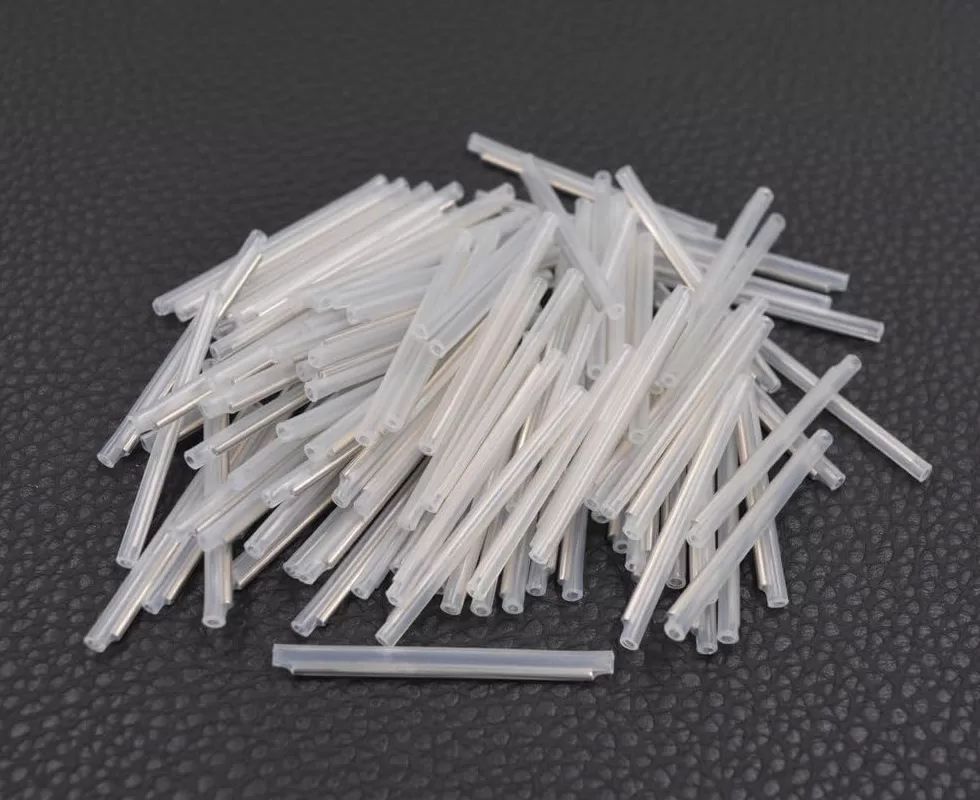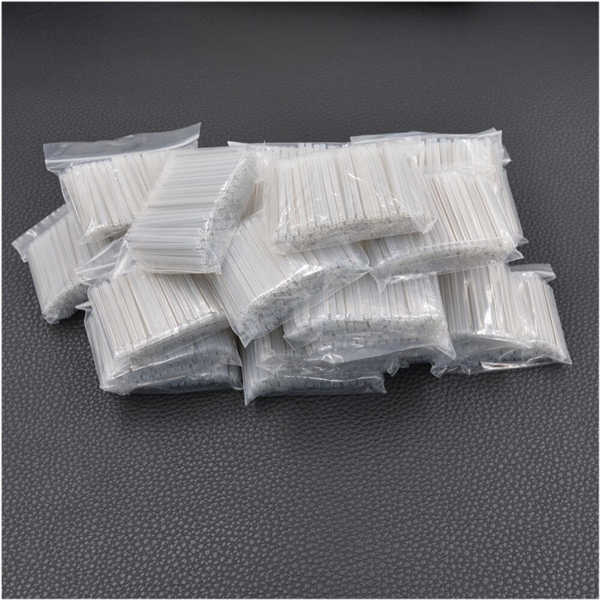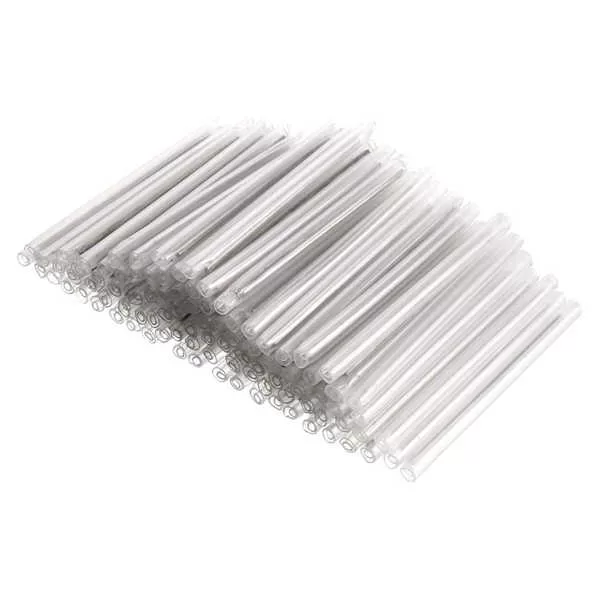In the world of fiber optic communication, where speed, accuracy, and reliability are critical, the smallest components often make the biggest difference. One such unsung hero is the Fiber Optic Splice Sleeve, also known as the Fusion Splice Sleeve. These compact yet essential devices play a key role in protecting fusion splices, ensuring stable and durable network performance.
As a leading supplier and manufacturer of Fiber Optic Splice Sleeves, we’ve put together this comprehensive guide to help fiber internet providers, ISPs, and telecom integrators understand everything they need to know about these vital components. Whether you’re building new FTTH networks or maintaining existing ones, this guide will walk you through the types, materials, applications, and best practices for selecting and using fiber optic splice sleeves.
What is a Fiber Optic Splice Sleeve?

A Fiber Optic Splice Sleeve is a protective tube designed to encase a fusion splice—the point where two optical fibers are joined together. After two fibers are precisely fused using a fusion splicer, the splice is fragile and needs protection from physical stress, moisture, dust, and other environmental factors.
El splice sleeve secures the splice, aligns the fiber cores, and reinforces the area with a strength member (often a steel rod), ensuring long-term durability and performance of the connection.
Why Fiber Optic Splice Sleeves Matter
Without proper protection, a fiber splice can be easily damaged, resulting in signal loss, increased attenuation, and expensive network outages. Using high-quality fiber optic splice sleeves ensures:
- Mechanical protection for the fragile splice joint
- Environmental sealing against moisture, dust, and temperature changes
- Fiber alignment to maintain low splice loss
- Long-term reliability in both indoor and outdoor installations
This is especially critical in FTTH, FTTx, and backbone infrastructure, where thousands of splices may be deployed across large geographic areas.
Key Components of a Fiber Optic Splice Sleeve

A standard fusion splice sleeve typically consists of three parts:
- Outer Heat Shrink Tube – Made from high-quality polyolefin, it shrinks uniformly when heated to tightly encapsulate the inner components.
- Inner Hot Melt Adhesive Layer – Bonds the fiber and sleeve components during heat shrinking, providing environmental protection.
- Stainless Steel or Ceramic Strength Member – Ensures the straightness and strength of the splice zone, preventing microbends or breaks.
Common Types of Fiber Optic Splice Sleeves
There are several types of splice sleeves depending on the application and installation environment:
1. Standard Single Fiber Splice Sleeves
- Typical size: 40mm or 60mm length
- Used in most fusion splicing applications
- Available in 1.0mm, 1.2mm, and 1.5mm diameters
2. Mini Splice Sleeves
- Shorter length (typically 25mm or 30mm)
- Ideal for high-density splice trays or compact enclosures
3. Ribbon Fiber Splice Sleeves
- Designed for splicing ribbon fiber (e.g., 4, 8, or 12 fibers in one strip)
- Flat and wider structure to accommodate multiple fibers
- Reinforced with dual rods
4. Dual Fiber or Multi-fiber Splice Sleeves
- Used for special applications where two or more fibers are spliced together
- Offers efficient space usage in dense closures
Fiber Optic Splice Sleeves Specifications
Here are typical specifications to consider when selecting a fiber optic splice sleeve:
| Característica | Descripción |
|---|---|
| Longitud | 25mm, 40mm, 45mm, 60mm (custom lengths available) |
| Outer Diameter | 2.5mm, 3.0mm, 3.5mm |
| Material | Heat shrinkable polyolefin + hot melt adhesive |
| Strength Rod | Stainless steel or ceramic |
| Operating Temp | -45°C to +100°C |
| Shrink Temp | 100°C to 120°C |
| Cumplimiento | RoHS / UL94V-0 flame rating |
Tip: Always match the sleeve size with your splice tray and fiber type for optimal performance.
Applications of Fiber Optic Splice Sleeves
Fiber optic splice sleeves are essential in a wide range of fiber deployments:
- FTTH (Fiber to the Home)
- FTTB (Fiber to the Building)
- FTTx Cabinets & Closures
- Data Centers
- Telecom Backbones
- Aerial and Underground Networks
- Emergency Fiber Repairs
How to Use a Fusion Splice Sleeve – Step-by-Step
- Slide the Splice Sleeve onto One Fiber
- Before splicing, insert the sleeve over one of the fiber ends.
- Perform the Fusion Splice
- Use a fusion splicer to precisely align and fuse the fiber ends.
- Center the Splice in the Sleeve
- Carefully slide the sleeve over the fusion splice point.
- Heat Shrink the Sleeve
- Place the sleeve in a splice sleeve heater or heat oven.
- Heat until the outer tubing shrinks, adhesive melts, and the splice is fully sealed.
- Cool and Organize in Splice Tray
- Let it cool down, then place it securely in the designated tray holder.
Advantages of High-Quality Fiber Optic Splice Sleeves

As a trusted manufacturer of fiber optic splice sleeves, we emphasize the importance of using quality materials. Here’s what you gain:
- Consistent shrink performance – Uniform shrinking without bubbles or air gaps
- Low optical loss – Ensures signal quality is not compromised
- Fácil instalación – Compatible with all major fusion splicers and trays
- Custom options – Lengths, diameters, and colors to meet your project specs
- Bulk availability – One-stop sourcing for large-scale fiber rollouts
Our Solutions for Fiber Internet Providers
We provide a full range of Fiber Optic Splice Sleeves tailored for fiber internet deployments. As a one-stop solution provider, we support ISPs and telecom contractors with:
- Bulk supply for large FTTH/OSP projects
- OEM / custom packaging for branding and resale
- High-speed logistics across North America and international markets
- Apoyo técnico for deployment planning and integration
We’ve proudly served top-tier ISPs and fiber installers for over a decade, providing consistent quality and fast delivery.
Choosing the Right Splice Sleeves for Your Network
When selecting fiber optic splice sleeves, consider:
- Splice Tray Compatibility – Ensure the sleeve fits into the tray holder
- Tipo de fibra – Single fiber vs. ribbon fiber
- Environmental Conditions – Outdoor, aerial, or underground
- Project Volume – Choose suppliers who can meet demand and timelines
Pro Tip: Always test a sample batch before committing to large orders.
Final Thoughts
Fiber Optic Splice Sleeves may be small, but their impact on network reliability and performance is massive. Whether you’re managing a rural FTTH buildout or upgrading a city-wide backbone, high-quality splice protection is non-negotiable.
As a specialized manufacturer and supplier, we’re here to support your fiber deployment with trusted products, expert advice, and seamless logistics.
Looking for Reliable Fiber Optic Splice Sleeves?
Contact us today for pricing, technical data sheets, or custom orders. Our team is ready to support your procurement needs.
Our Email: [email protected]
